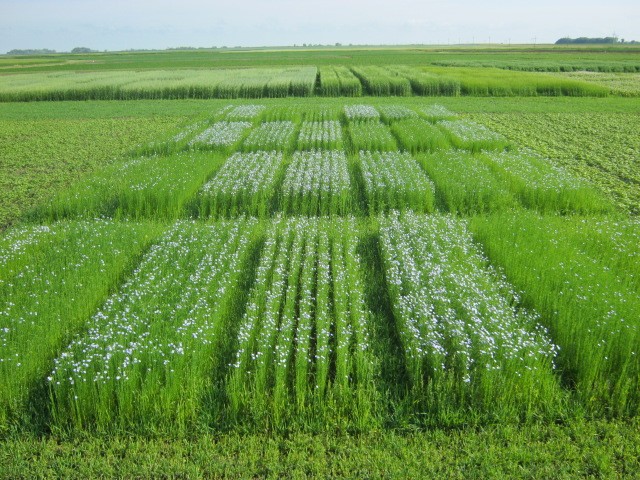Organic Research at the CREC
North Dakota has been a leader in the nation in terms of total USDA certified organic acres when compared to other states. Recent years have seen our ranking decline somewhat, although we still continue to have a place in total production acres. The Carrington Research Extension Center’s mission includes addressing the needs of many types of farms and farming systems. Research trials conducted in a certified organic environment is just another method of delivering information to serve the needs for this group of farmers along with building a long term database of information related to this farming method.
The Center has been conducting research in certified organic environments for the past 15 growing seasons both on-farm (research center) and off-farm (farmers’ fields). Research sites off-farm have been located near the North Dakota communities of Cathay, Robinson, Tappen, Dawson, Fessenden, Rugby, and LaMoure. The Center’s certified organic land has been approved by the USDA for 7 years, with the last restricted product applied in the summer of 2004. Recently, the center has converted an additional 12 acres of land to meet the needs of this constituency. This new plot ground will be certified organic in 2016.
The majority of the research conducted has been to provide organic crop and variety performance data for wheat, oats, barley, durum, flax, field pea, dry bean, soybean, cowpea, emmer, einkorn, spelt, potato, buckwheat, rye, and cover crops. Other areas of research have included trials related to various production practices or management such as: seeding rate and date, cover crop management, compost tea, seed source and increase, no-till, and rotation trials using animal manures and cover crops.

Organic flax variety trial, July 11, 2014
Management practices of the organic plots have focused mainly on crop rotation and the use of green manure cover crops to supply crop nutrient needs. To date, animal manure, with the exception of rotational trials, has not been used. Future plans are to incorporate manure applications as a method of supplying crop nutrients. With additional land the CREC will be able to expand its effort in organic research. The added land base will also allow collaboration with other NDSU scientists and Universities who are interested in conducting research in this environment.
Current variety trial information from the CREC organic plots is available on the NDSU variety trial site or the CREC variety trial site (www.ag.ndsu.edu/varietytrials/carrington-rec/2014-trial-results) which includes data across multiple years and locations. Trial results are also available by hardcopy in the CREC annual reports or by request.
Steve Zwinger
Agronomy Research Specialist


